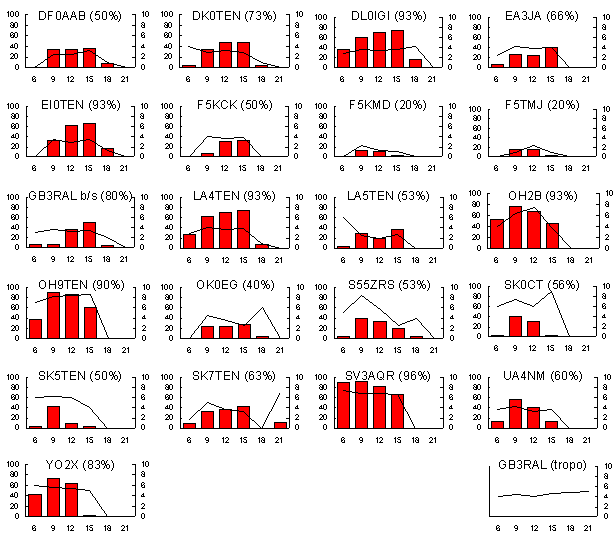Reliability and Strength of European Beacons
Reported in the UK during November 2001
| The following graphs depict reliability and signal strength of all European beacons heard by members of the Six and Ten Reporting Club in the UK during November 2001. The legend below provides an explanation of these graphs.
These beacons were heard variously by direct path F2 and F2 backscatter. Longer paths to SV, UA and YO were exclusively by single-hop F-layer, those beacons a little closer to the UK (OH, SM, OK, S5 and EA were heard via a mixture of direct and backscatter propagation, while all the other (closer) beacons were heard by backscatter only. The amount of definite sporadic E detected was minimal. (GB3RAL tropo shows strength results via troposcatter at G0AEV. |

| Beacon graphs legend: Graph bars (in red; left side Y-axis): beacon reliability as the percentage of days a beacon was heard by any (UK) observer within each time band. Graph lines (right side Y-axis): signal strength calculated as the average of the daily maximum signal reported by any observer in each time band. Time band codes (X-axis): 6=0600-0900, 9=0900-1200, 12=1200-1500, etc. Times in UT (GMT). Titles are beacon callsigns followed by the daily reliability figures, the percentage of days for the month on which the beacon was reported |
.